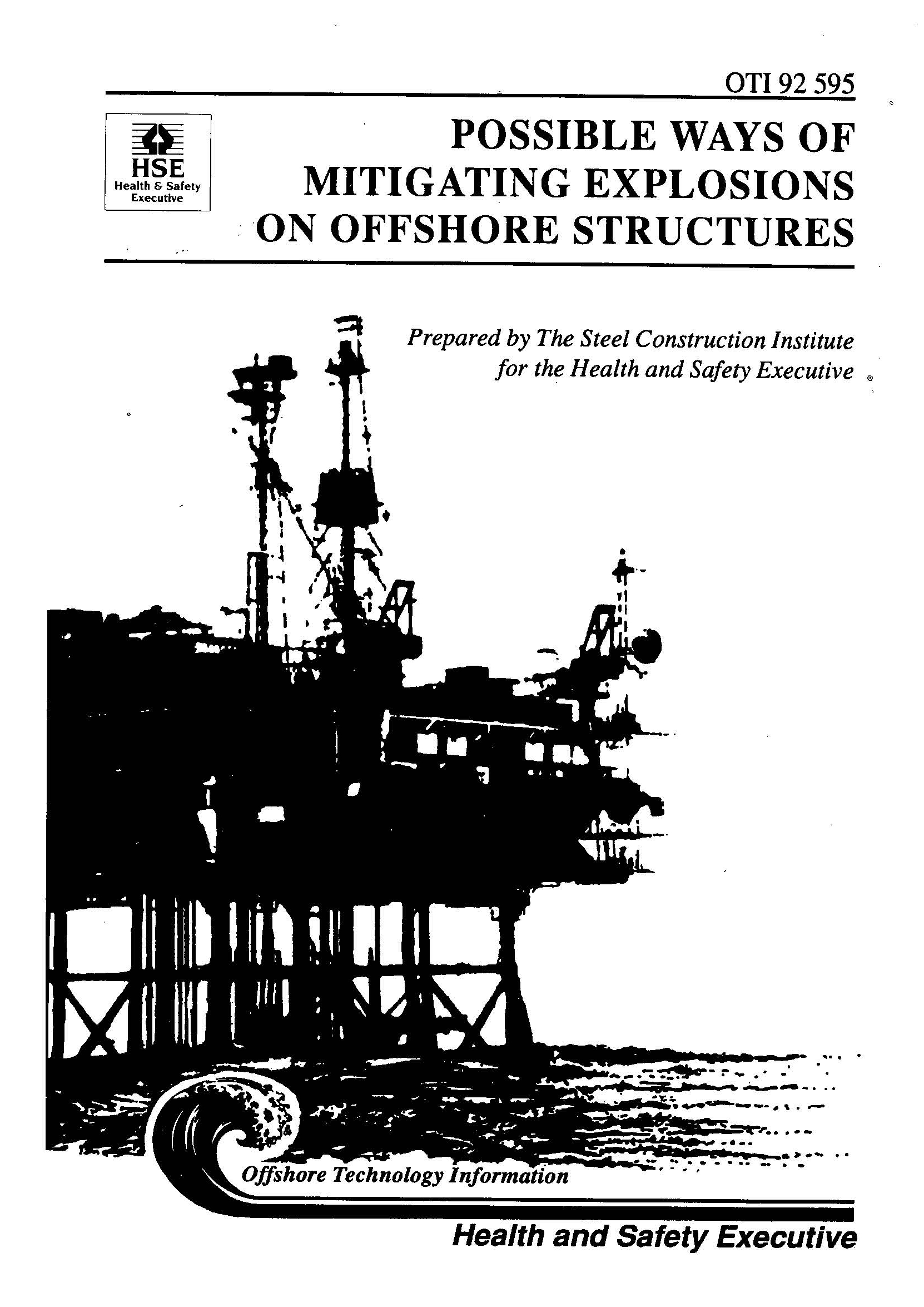HSE OTI 92 595
Possible ways of mitigating explosions on offshore structures
Work Package BL5
BFETS Phase 1

FABIG Members: Log-in to access all FABIG resources LOG IN
SUMMARY
If not checked or relieved by appropriate design, explosions in offshore platforms have the potential to cause structural damage and lead to further much larger releases of fuel, escalating a relatively minor release into a major disaster. If a flammable cloud is partially or completely confined by walls or a roof within a volume containing pipework obstructions, then very high overpressures can be generated. Such a combination of congestion (pipework) and confinement is inevitably present on offshore platforms.
Where the consequences of an explosion are unacceptable, it may be necessary to consider ways in which either the overpressures generated or the effects on the platform might be reduced. This report reviews information relating to the mitigation of explosions on offshore structures. It concentrates specifically on methods which can mitigate the effects of an explosion given that a release of flammable gas is present and that ignition is possible. The report does not address means of reducing the likelihood of a release nor of removing potential ignition sources.
The review has identified that reduction in explosion overpressures can be achieved by an explosion relief, explosion suppressant systems, blast containment or deflection and by attention to platform design. Directly relevant information has been identified relating to the use of explosion relief and water sprays as mitigation techniques. Information has also been obtained on the design of active explosion suppressant systems which release liquid or dust suppressants on flame detection. Such systems are currently employed in military, aviation and commercial applications. Laboratory experimental work has also been identified on the effectiveness of dust or liquid suppressant systems, aqueous foams and inerrant dilution.
There is only limited use of explosion mitigation techniques on offshore structures. Current practices consist mainly of the use of blast walls to restrict the extent of any explosion. However, there is isolated use of explosion relief panels and suppressant systems and the use of the water deluge system as a mitigation technique is being actively pursued by at least one operator.
Those techniques other than explosion suppressant systems can only be assessed by the methods used to predict the overpressures generated by explosions in congested regions. The degree of validation of these techniques is insufficient, so it cannot confidently be predicted that specific applications, such as explosion relief panels, will reduce explosion overpressures to acceptable magnitudes. The complex interaction of suppressant with explosion flame is poorly understood. No suppressant system has been assessed in geometries identical to those in offshore modules, though water sprays have been used in similar geometries.
The full report is publicly available from the HSE Website at www.hse.gov.uk/research/otipdf/oti92595.pdf.
Online purchase options:
Non-Members of FABIG are able to purchase PDF copies of the reports.